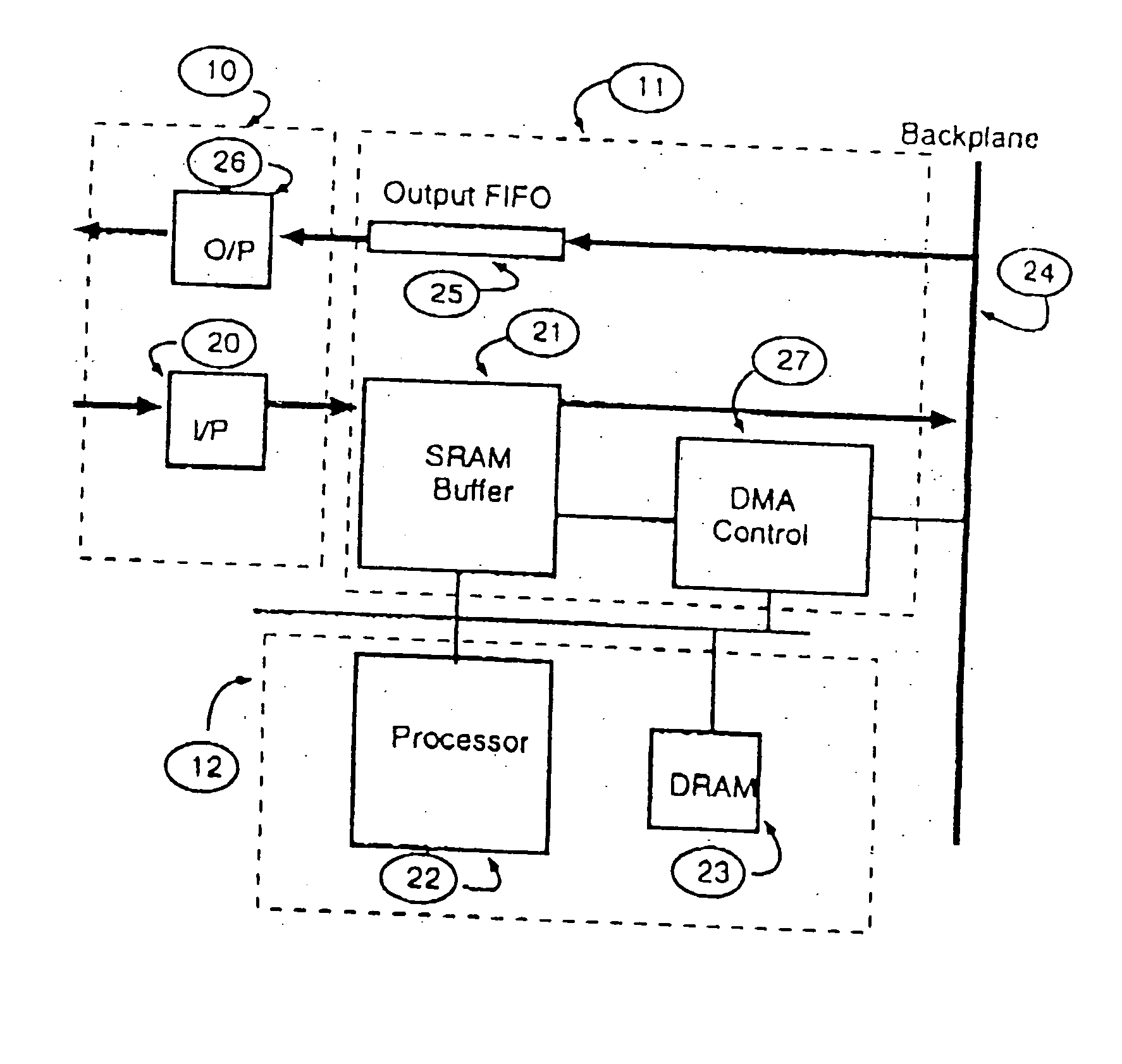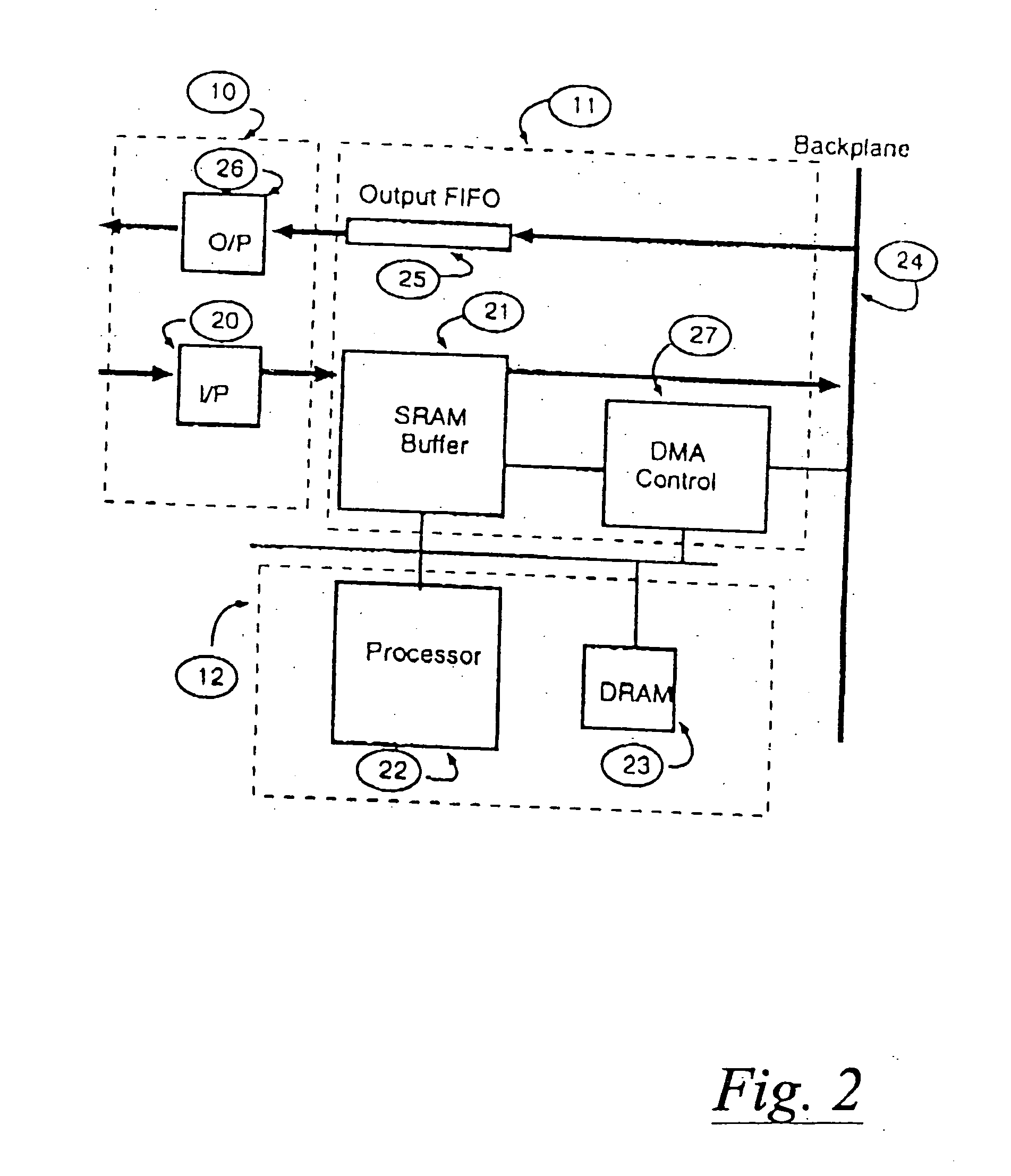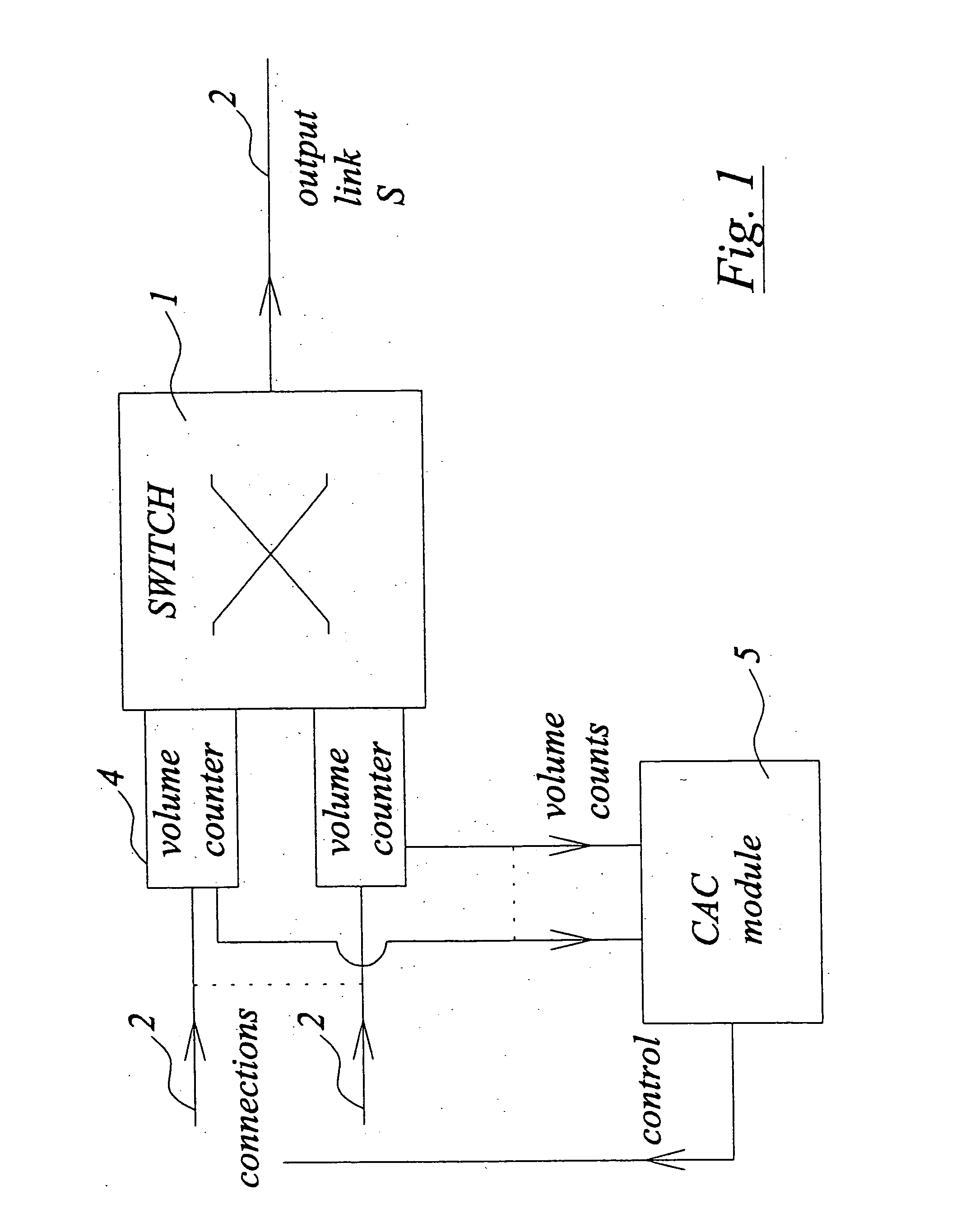Data networks
a data network and data technology, applied in the field of data networks, can solve the problems of increasing the difficulty of controlling congestion on high-speed networks, increasing the cost of high-speed networks, and historically being impossible to predict the impact of the provision of services
- Summary
- Abstract
- Description
- Claims
- Application Information
AI Technical Summary
Benefits of technology
Problems solved by technology
Method used
Image
Examples
Embodiment Construction
[0081] While the actual physical representation of the connections to and from a switch and the connections to any apparatus such as a computer, programmed chip, or the like will be easily appreciated it is at the same time advantageous to represent it graphically and thus reference is made to FIG. 1 which illustrates a switch 1 having an output link 2 and a plurality of input multiplex current connections 3 each feeding a traffic volume counter 4. The volume counter 4 feeds a control admission module (CAC) 5 which in turn feeds a control signal for admission control by a line 6 to a source not shown.
[0082] The volume counter 4 and in particular the CAC 5 contain the majority of the various means for carrying out the invention. The means will generally be devices, chips, computer memory etc. which can carry the software to provide the invention.
[0083] Within this broad principle stated above, the present invention has a number of aspects. The first aspect concerns the way of estim...
PUM
 Login to View More
Login to View More Abstract
Description
Claims
Application Information
 Login to View More
Login to View More - R&D
- Intellectual Property
- Life Sciences
- Materials
- Tech Scout
- Unparalleled Data Quality
- Higher Quality Content
- 60% Fewer Hallucinations
Browse by: Latest US Patents, China's latest patents, Technical Efficacy Thesaurus, Application Domain, Technology Topic, Popular Technical Reports.
© 2025 PatSnap. All rights reserved.Legal|Privacy policy|Modern Slavery Act Transparency Statement|Sitemap|About US| Contact US: help@patsnap.com



